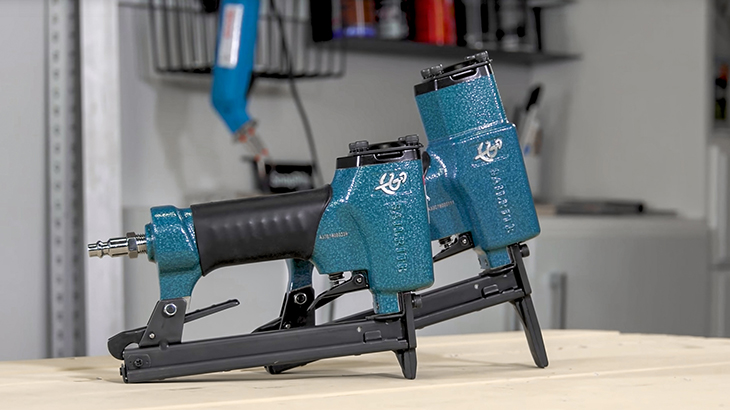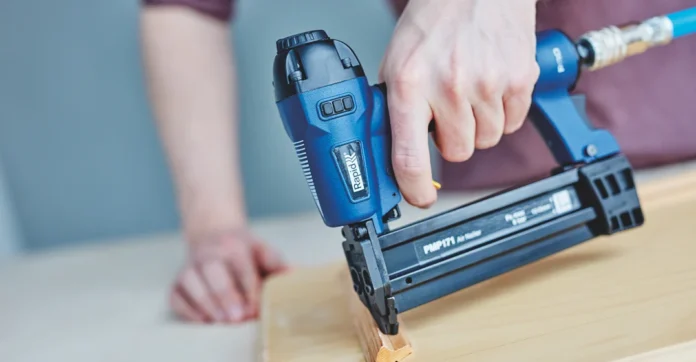If you’re new to DIY and want to know the difference between the types of staple gun, and what does, you’re in the right place. Every staple gun will suit a different type of DIY project, and knowing the difference is crucial.
Different guns offer different amounts of pressure and efficiency, so if you’re a beginner you would want to start off with a less powerful tool. Read on to help decide which gun to opt for, depending on your project.
Manual Staple Gun
The manual is a great choice for beginners. Easy to use, you can purchase this type of staple gun in plastic, aluminium or steel form. The plastic option is the most lightweight, making it easier to use. However, for large projects it may take more muscle as there are only a limited amount of staples in the gun.
Electric Staple Gun
The electric staple gun offers more precision to make for a faster experience. This is ideal for the harder-to-reach spaces like ceilings, tight corners and spaces because it requires a bit more force than a manual staple gun.
You can opt for a battery-powered electric staple gun or one with a cord. Battery-powered guns are a must for outdoor projects.
Pneumatic Staple Gun
The most powerful staple gun is a pneumatic and are mainly used by professionals. Or if you’re doing a job that requires long staples, or a lot of them, this type is what you need. They’re lightweight but can do anything from laying floors or setting up panelling. However, they do require being connected to a compressor which can make them difficult to work with as they need to be close to a power socket.
Upholstery
If you’re looking to do some upholstery, the fabric you’re working with will determine what staple gun you should use. The thicker the fabric, the more power you’ll need from your staple gun. Depending on how many small spaces you need to reach, an electric or pneumatic staple gun will work best for upholstery projects.
Carpentry
Woodwork and carpentry projects require as much power as possible, so a pneumatic crown staple gun is ideal for a project like this.

Crafts and Small Tasks
For smaller projects and crafts, a lightweight manual staple gun will do the job. These jobs won’t require much strength but depends more on how many staples you need to finish the job. The more staples you need, the more you’ll need an automatic staple gun to finish the project.
Outdoor Projects
For outdoor projects, make sure you opt for a cordless staple gun. Battery or gas-powered staple guns are required for jobs without access to electricity. Lightweight guns are also great as they don’t require much lugging around.
Pros and Cons
Pneumatic staple guns have the most power to staple heavy-weight projects, with little maintenance. They’re also very durable, increasing their life span with minimal errors. They can be expensive, however.
Electric staple guns are great for those with a lower budget with projects that require less power. They are also lightweight making them easy to transport around which is good for a project that may take some time. They can also be less quiet than a pneumatic gun, which is helpful for jobs outdoors and in public.
To Sum Up
We’ve explained what each type of staple gun does, so you’re hopefully more clued up with what type to get depending on your project. From the amount of staples you need, to whether you’re near electricity or require a lot of strength, there are plenty of factors that can determine which staple gun is best suited for your job.
Ultimately, the smaller the project the more likely you are to need a manual staple gun. The more power you need, and the bigger the project, the more hefty the gun.
However, if you’re a beginner it’s always important to try out a manual before you go up a level to the more professional pneumatic staple gun. Once you feel confident, you can start to try out more powerful staple guns in your next projects.


















